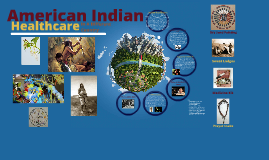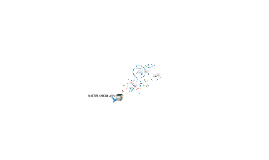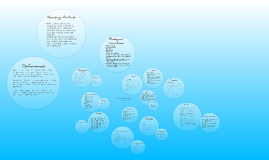American Indian
Transcript: In A Different Country Pregnancy/ Childbirth The American Indian people are a quiet people. Silence is something that has always been a part in their culture. If they are angry or upset they do not express those emotions. They are simply silent. Some people take this as not caring, but it is a part of their culture and something they have been taught since birth. When Native Americans do communicate they put much more of an emphasis and value on listening rather than speaking. They very rarely talk just for the sake of talking. They don't make much small talk except between close friends or family. Native Americans do not find power in words that other cultures may. There is much more emphasis on affective communication, such as expressing their feelings about something, rather than just verbal communication. Men played a big role, they were responsible for all of the hunting, defense, and making weapons. They were accounted for a lot. Women stayed home and did all of the cooking and sewing, and taking care of the children. The Native Americans had to rely on natural remedies from the earth. Native American medicine combines herbs, spirituality, and magic. We may laugh at the Indians method of treating ailments. However, their medicine practices were beneficial and continue to work in modern times. Different national groups across the globe have their own unique healing rituals. Native American medicine is very similar to medicinal approaches used by the Chinese. Both value the treatment of the mind, body, and spirit, and uses the natural elements to cure illnesses. Native American medicine uses medicine men or women to perform healing. Before treating a patient, the medicine man or woman must fully understand their condition. Different herbs and rituals are used to treat different ailments. Once the medicine man knows the problem, the next step entails administering an herb medicine to cure the problem. In some instance, Native American doctors also recommend a ritual purification. Purification is intended to get rid of the harmful toxins that can cause many health problems. Cites http://teachinghistory.org/history-content/ask-a-historian/24097 Native Americans Book http://www.indians.org/articles/native-american-medicine.html http://www.uic.edu/classes/osci/osci590/12_4%20North%20American%20Medicine.htm Indians of the Pacific Northwest Dry Sand Painting Calling a doctor was no simple matter for Native Americans. Often, visits and ceremonial treatments lasted for several days. They were organized by healers , known as shamans or medicine men and women, some had as much power as any chief. Shamans cured the sick with herbs, performed healing rituals, told the future or found missing property. They knew the dances, chants, prayers and ceremonies that would bring good fortune to their tribes and please the spirits. Young people had to take many difficult tests of physical strength before they could become shamans, and few succeeded. Native Americans were generally healthy until fatal diseases were introduced from Europe. During their pregnancies, women restricted their activities and took special care with their diet and behavior to protect the baby. The Cherokees, for example, believed that certain foods would affect the fetus. Pregnant women avoided foods that they believed would harm the baby or cause unwanted physical characteristics. For example, they believed that eating raccoon or pheasant would make the baby sick, or could cause death; consuming speckled trout could cause birthmarks; and eating black walnuts could give the baby a big nose. They thought that wearing neckerchiefs while pregnant caused umbilical problems, and lingering in doorways slowed delivery. Expectant mothers and fathers participated in rituals to guarantee a safe delivery, washing their hands and feet daily and employing medicine men to perform tasks hat would make deliveries easier. Men were rarely allowed in the birth room, and they were never allowed to see the birth. A woman in labor would stand, kneel, or sit, but she never gave birth lying down. Usually no one bothered to catch the baby, which fell onto leaves placed beneath the mother. They said that they do this because it gives the children strength. Folk Remedies Prayer Snake Communication/Family and Gender Issues Medicine Kit Video on healthcare issues Sweat Lodges The Medicine Man Indian Healthcare Healthcare American Indian

















